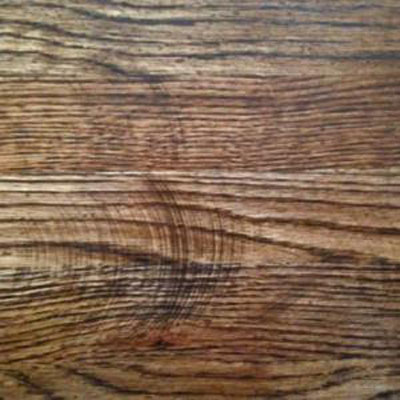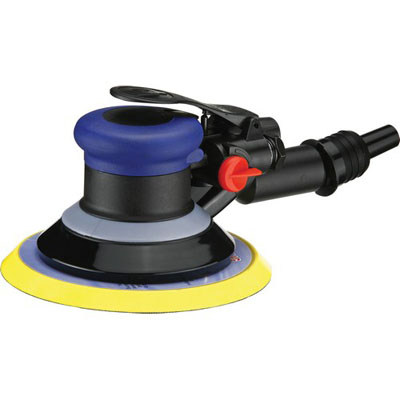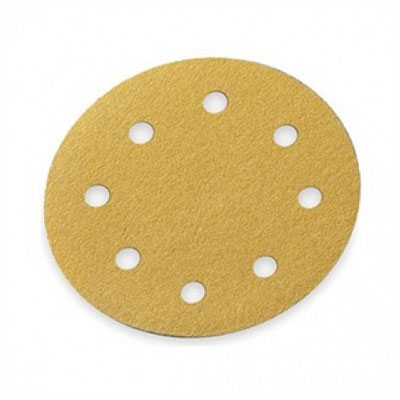
The air compressor, the shop's random orbit sanders, operator training, and the sanding disc are useful to evaluate in woodworking finishing applications.

One of the most common problems in woodworking finishing applications is swirl mark, also known as fish hooks. This is a complaint that cuts across a one-person cabinet shop on up to large manufacturing plants, and can result in a reworking of the product and increased costs.
In determining the causes and solutions, it is useful to evaluate four main factors in the finishing process: the air compressor; the shop's random orbit sanders; operator training; and the sanding disc.
Air compressors
Some shops are still using the original compressor with which they began their business. Yet production needs may have increased or changed. Perhaps additional air tools have been added increasing the drain on the CFMs and PSIs from the compressor. The layout of the shop may have changed, affecting the delivery system of air from the compressor to the workstation. It is important to check the supply line for routing, distance, length, diameter and kinks to ensure a maximum air supply.
Another common compressor problem is air leaks. Compressor manufactures estimate that many shops, no matter the size of the shop, may have up to 25 percent air leaks. Air leaks affect both the CFMs and PSIs required for maximum tool performance, which in turn can result in swirl marks. Also, compressor air is considered the third utility behind electric and gas. Air leaks increase costs.
Random orbit sanders

Random orbit sanders require from 8.5 to 17 CFMs per unit. They offer a speed range of 13,000 to 12,000 RPMs, with a DB rating ranging from the upper 70s to the middle 80s. The operator has a choice of 3/32, 5/16, 3/16/,3/8 random orbit patterns.
The sander itself may contribute to swirl marks for a number of reasons. It may not be receiving enough air to operate at peak performance (see air compressors above). The DA pad may have cracked edges or under-sizing caused by excessive wear; a worn DA pad, or one with excessive dirt or glue buildup, can lead to swirl marks or other finishing problems. Often, swirl problems are quickly resolved by simply replacing the DA pad.
Sanding disc

Finally, we come to what is usually blamed for the swirl mark problem - the sanding disc. Sanding discs come in a rainbow of colors. The color, however, serves no purpose in identifying usage, function, quality, etc.; one manufacture has the same color discs that serve five different functions. The bottom line is not all woodworking style discs serve the same function just because the color is the same across different manufacturers. In other words - Don't judge a disc by its color.
Beyond the grit, size, and number of holes, what also has an impact is the disc backing. Backings can be made of any number of materials including paper, Velcro, HD paper, cloth and film. In turn, the backing material can vary by thickness, adhesive bonding and ability to withstand heat from random orbit tool sanding procedures. There is no industry standard.
Disc surfaces also can vary by types of minerals and/or blends. Aluminum oxide (and blended other minerals) has been accepted in all areas of wood working production for many years. Most disc surfaces contain stearates, which reduce sanded material from sticking to the disc during the stock removal. However, even though stearates differ among manufactures, they should not contribute to swirl marks.